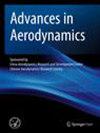Numerical simulation and analysis of a ducted-fan drone hovering in confined environments
IF 2.3
3区 工程技术
Q2 ENGINEERING, MECHANICAL
引用次数: 0
Abstract
Ducted-fan drones are expected to become the main drone configuration in the future due to their high efficiency and minimal noise. When drones operate in confined spaces, significant proximity effects may interfere with the aerodynamic performance and pose challenges to flight safety. This study utilizes computational fluid dynamics simulation with the Unsteady Reynolds-averaged Navier–Stokes (URANS) method to estimate the proximity effects. Through experimental validation, our computational results show that the influence range of proximity effects lies within four rotor radii. The ground effect and the ceiling effect mainly affect thrust properties, while the wall effect mainly affects the lateral force and the pitching moment. In ground effect, the rotor thrust increases exponentially by up to 26% with ground distance compared with that in open space. Minimum duct thrust and total thrust are observed at one rotor radius above the ground. In ceiling effect, all the thrusts rise as the drone approaches the ceiling, and total thrust increases by up to 19%. In wall effect, all the thrusts stay constant. The pitching moment and lateral force rise exponentially with the wall distance. Changes in blade angle of attack and duct pressure distributions can account for the performance change. The results are of great importance to the path planning and flight controller design of ducted-fan drones for safe and efficient operations in confined environments.在密闭环境中悬停的风扇式无人机的数值模拟与分析
风扇式无人机效率高、噪音小,有望成为未来无人机的主要配置。当无人机在密闭空间内运行时,明显的邻近效应可能会干扰气动性能,并对飞行安全构成挑战。本研究利用非稳态雷诺平均纳维-斯托克斯(URANS)方法进行计算流体动力学模拟,以估算邻近效应。通过实验验证,我们的计算结果表明,近地效应的影响范围在四个旋翼半径内。地面效应和顶棚效应主要影响推力特性,而壁面效应主要影响侧向力和俯仰力矩。在地面效应中,与开放空间相比,转子推力随地面距离的增加呈指数增长,最高可达 26%。在离地面一个转子半径处可观察到最小的风道推力和总推力。在天花板效应中,当无人机接近天花板时,所有推力都会上升,总推力最多增加 19%。在墙壁效应下,所有推力保持不变。俯仰力矩和侧向力随墙壁距离呈指数上升。叶片攻角和风道压力分布的变化可以解释性能的变化。这些结果对风道扇形无人机的路径规划和飞行控制器设计具有重要意义,可使其在狭窄环境中安全高效地运行。
本文章由计算机程序翻译,如有差异,请以英文原文为准。
求助全文
约1分钟内获得全文
求助全文

 求助内容:
求助内容: 应助结果提醒方式:
应助结果提醒方式:


